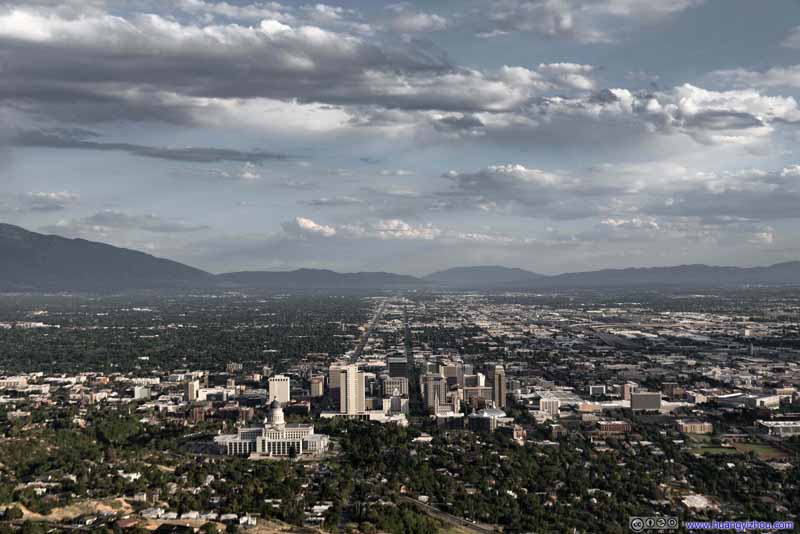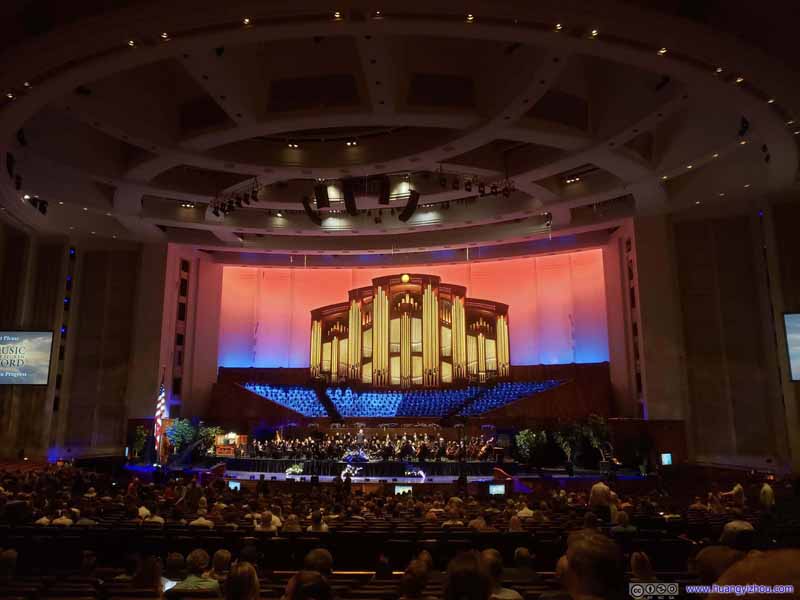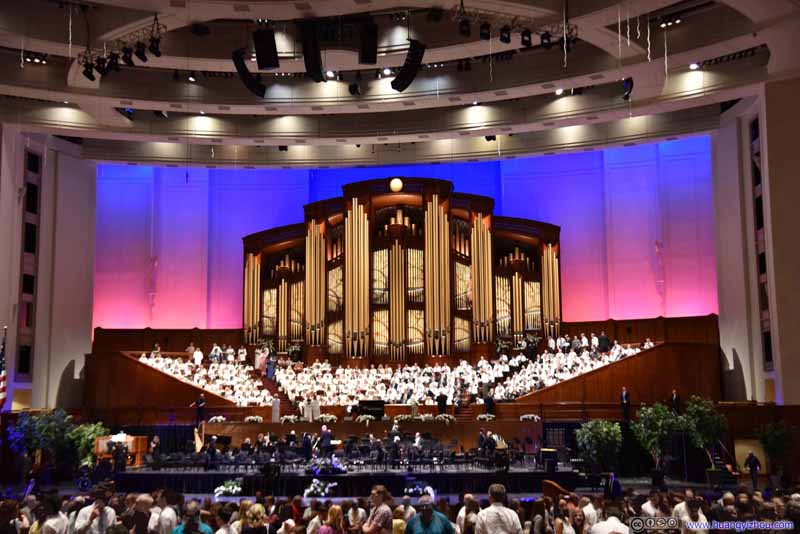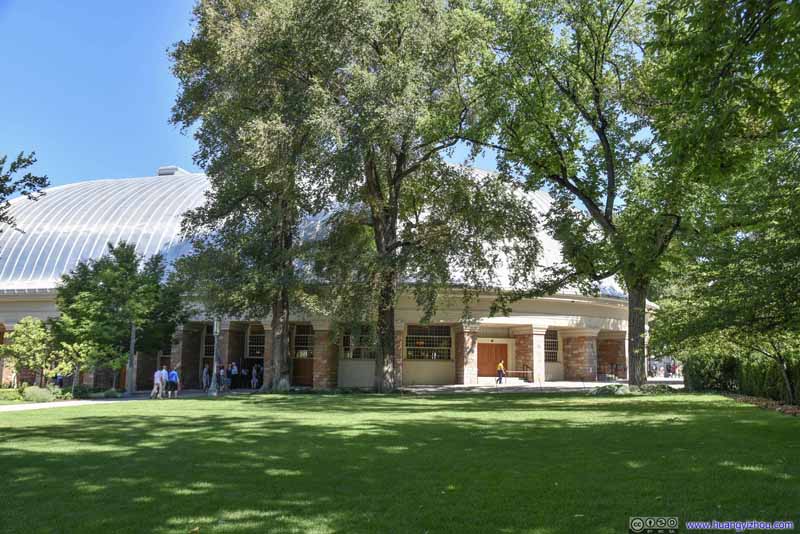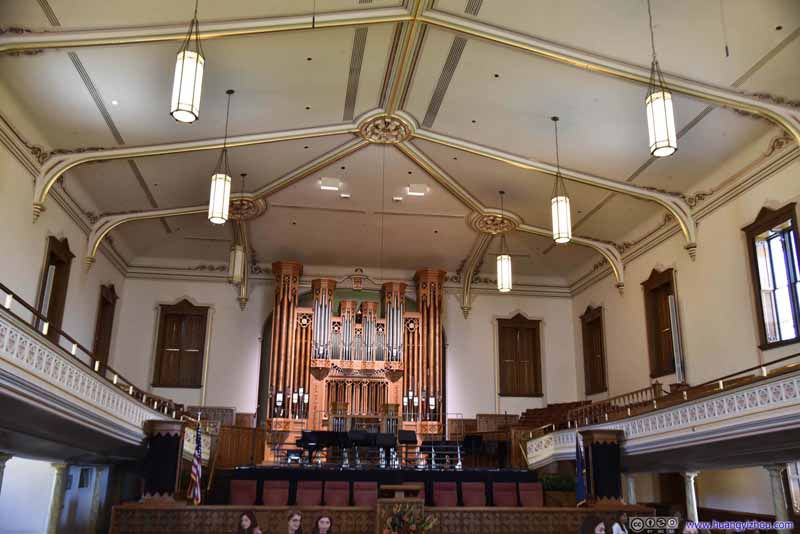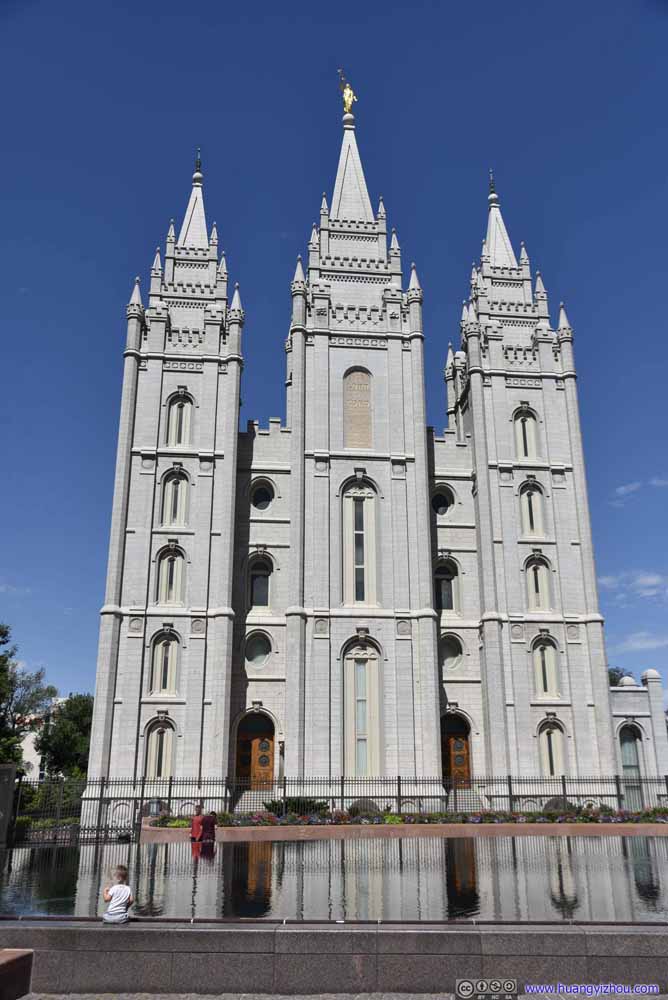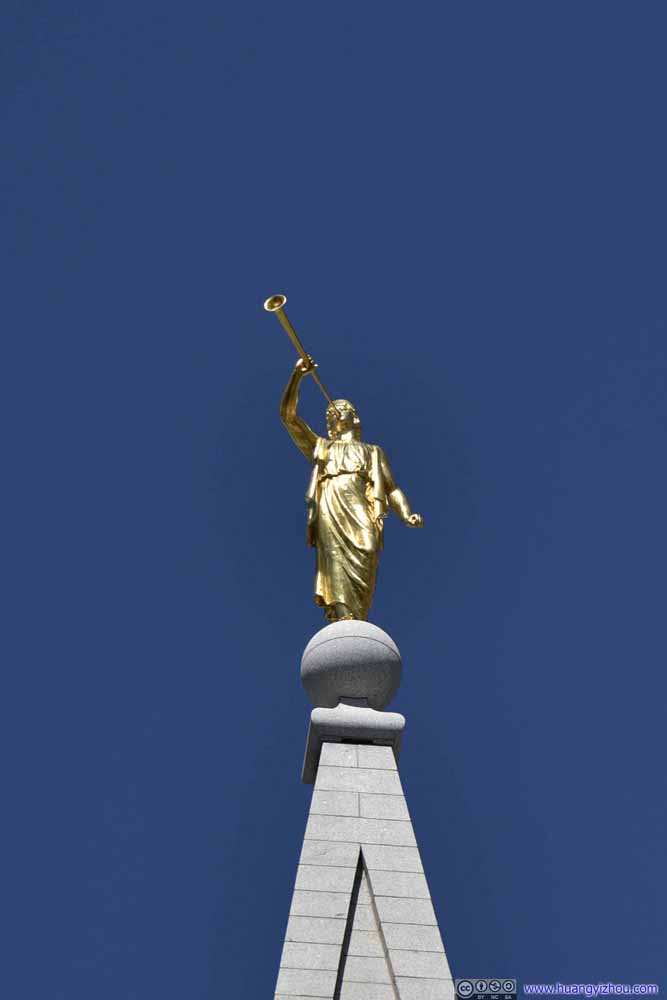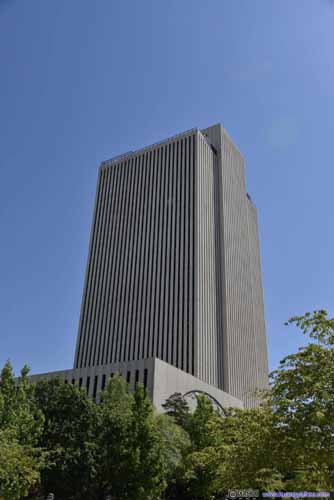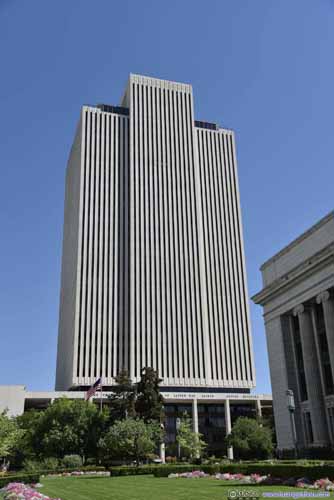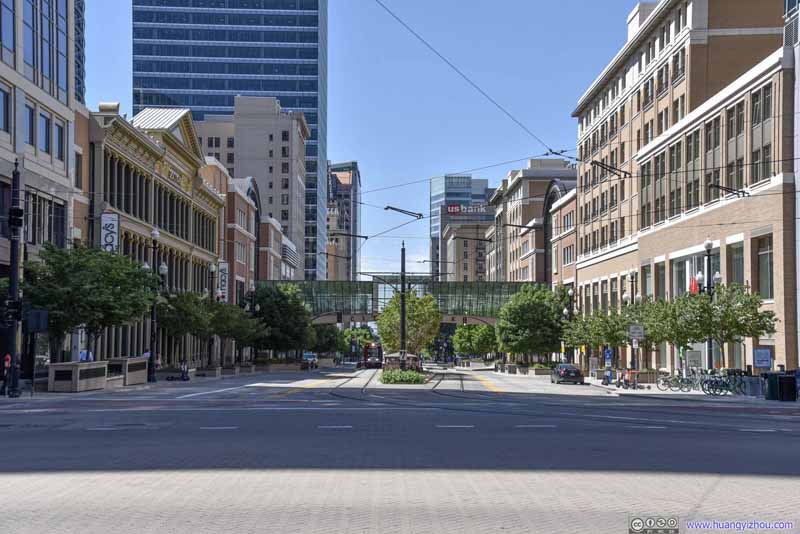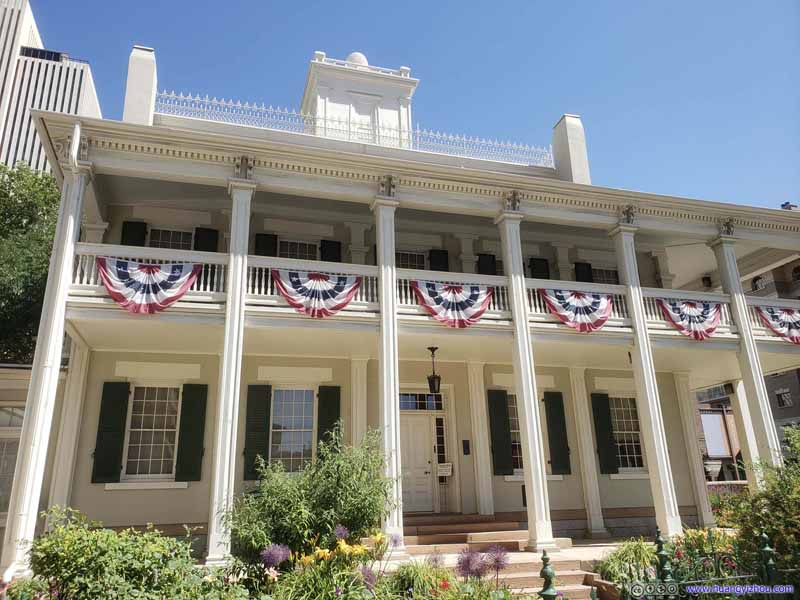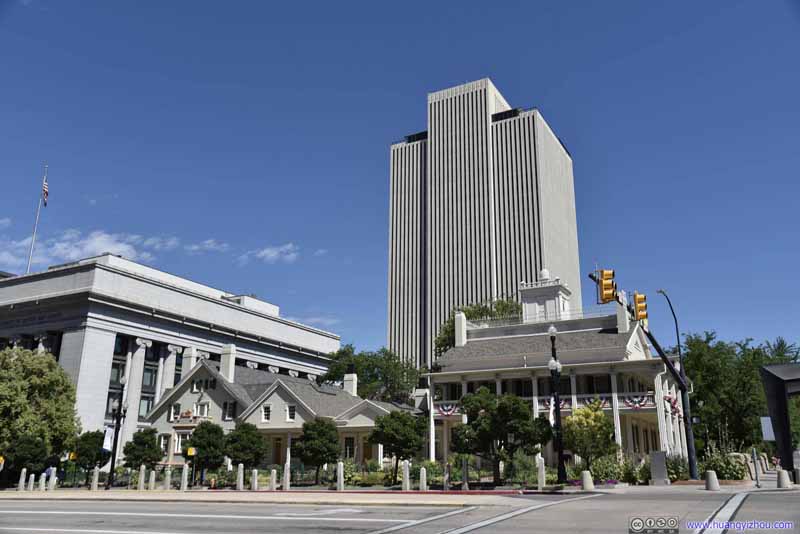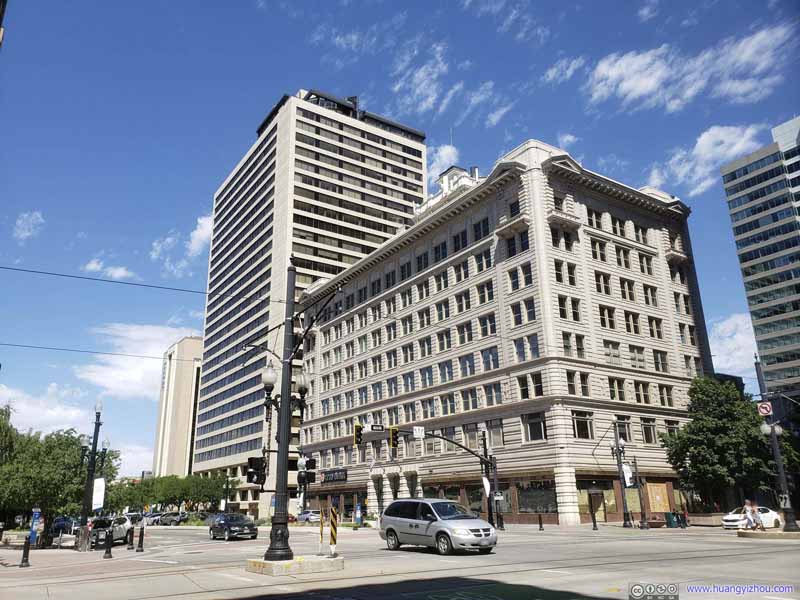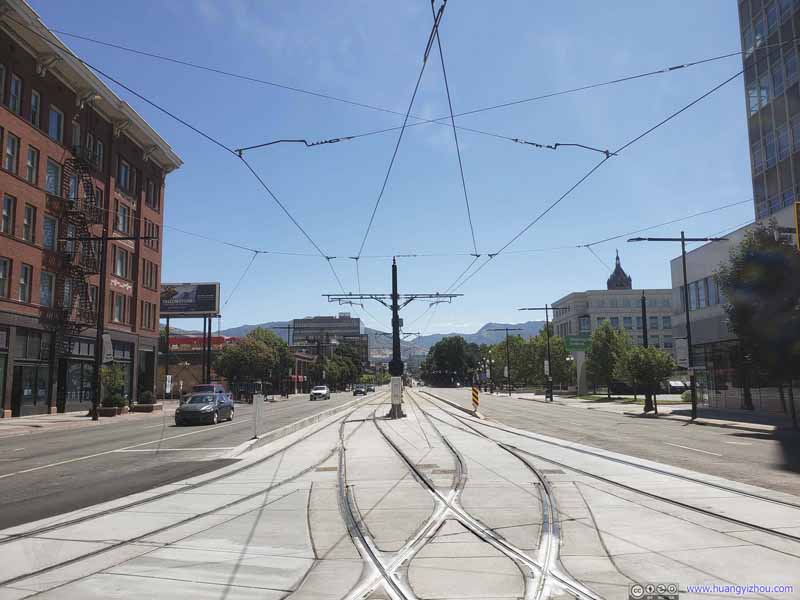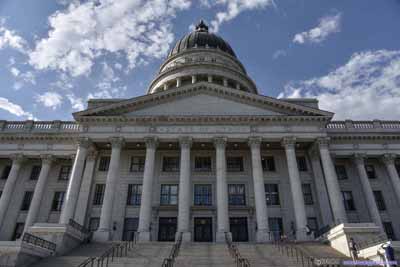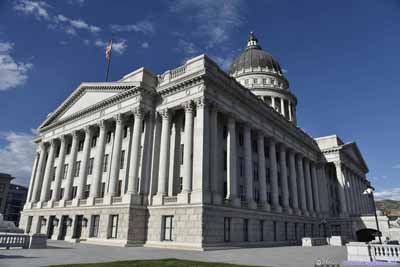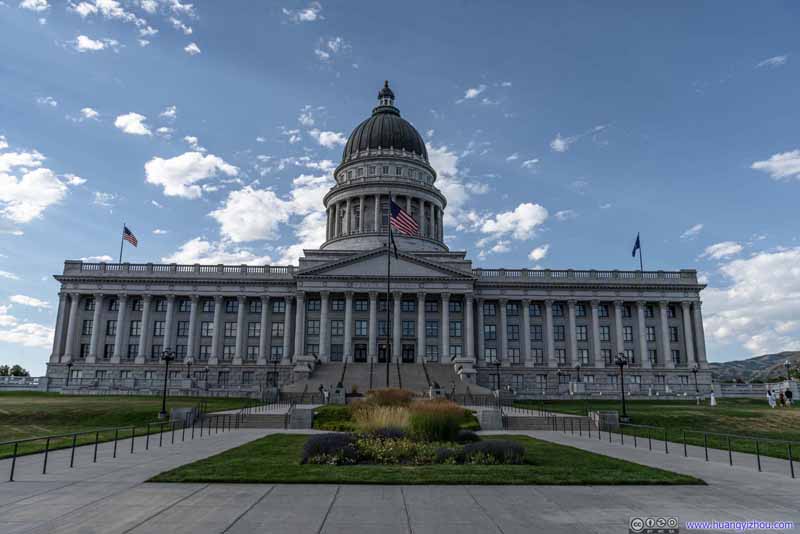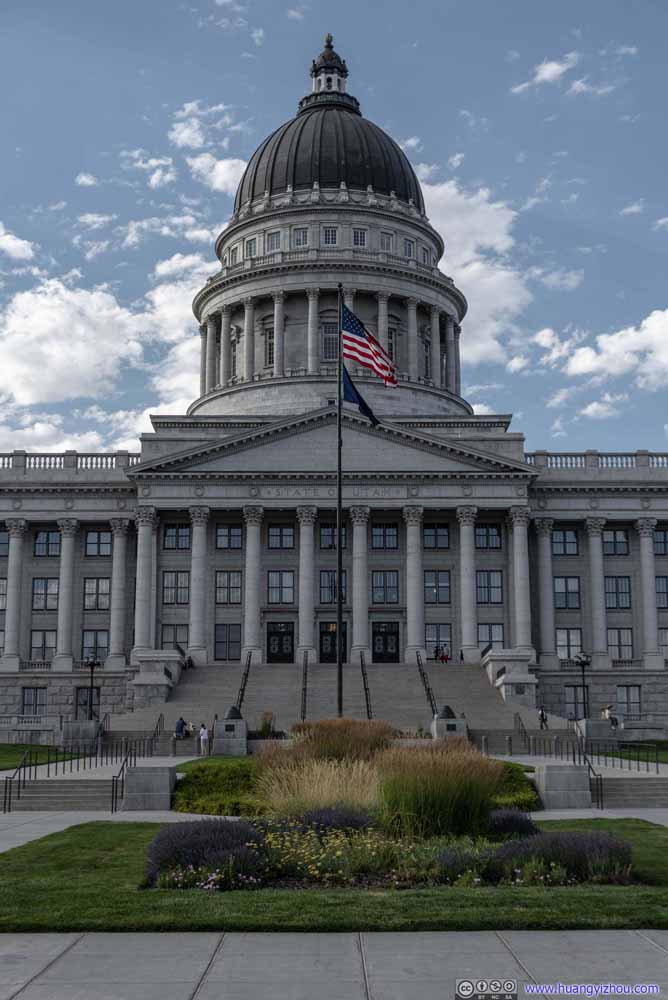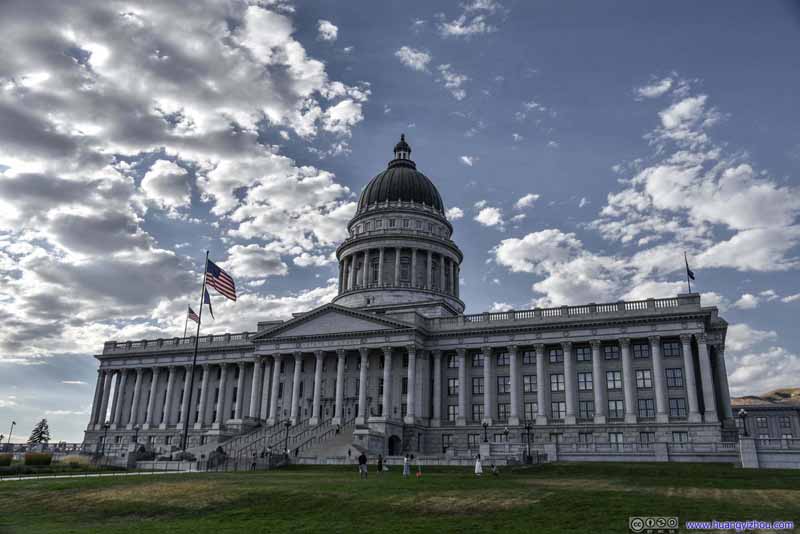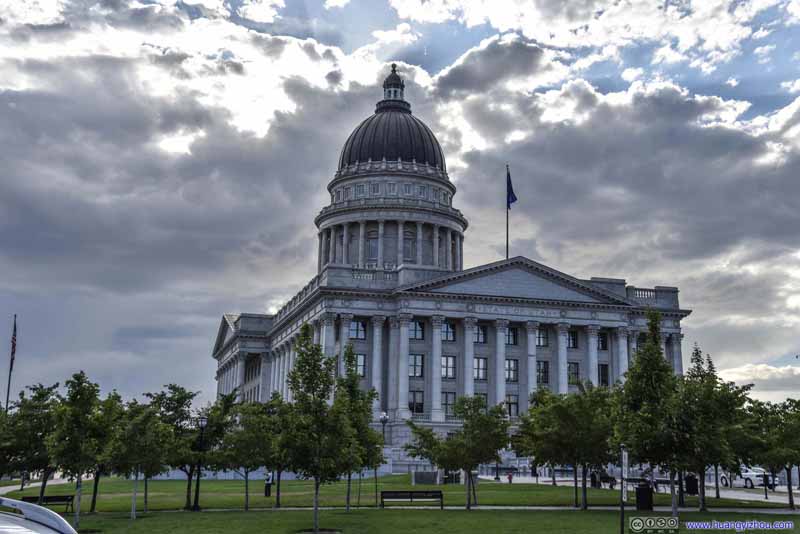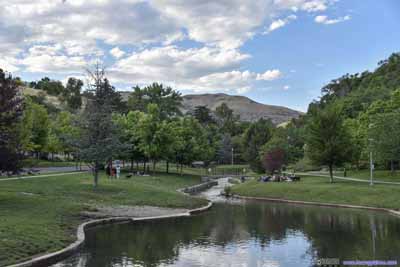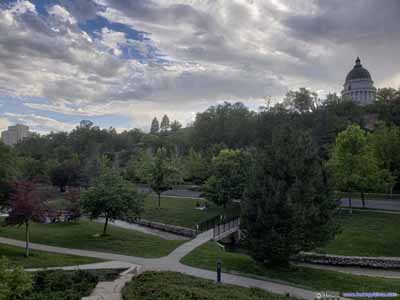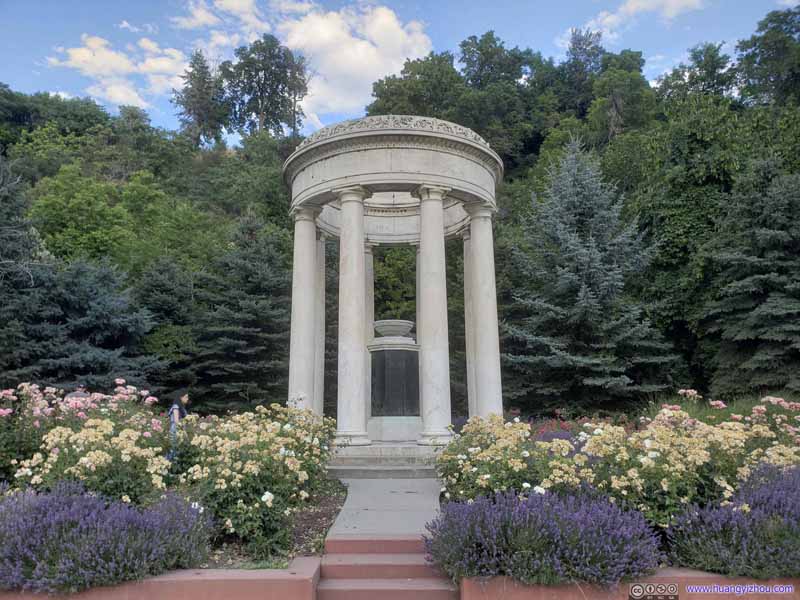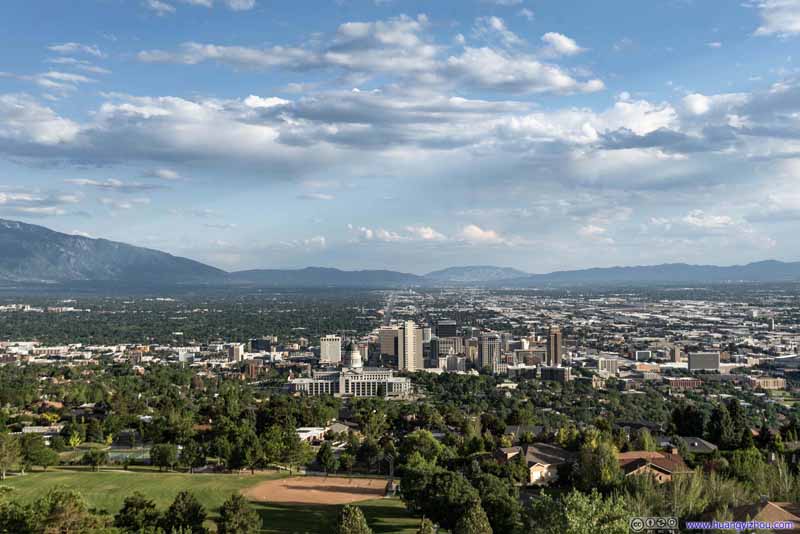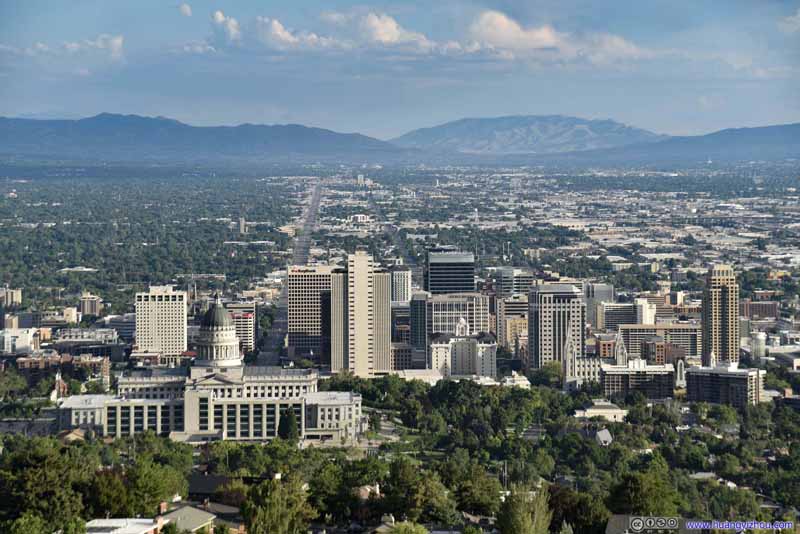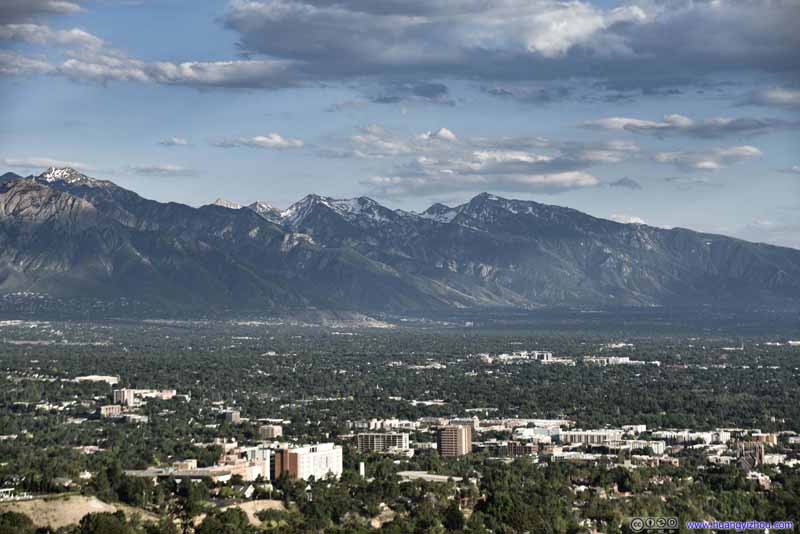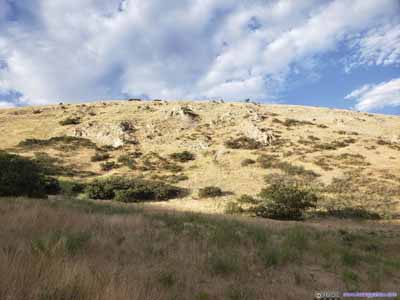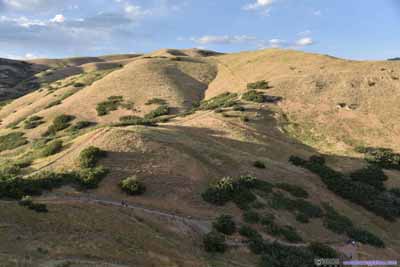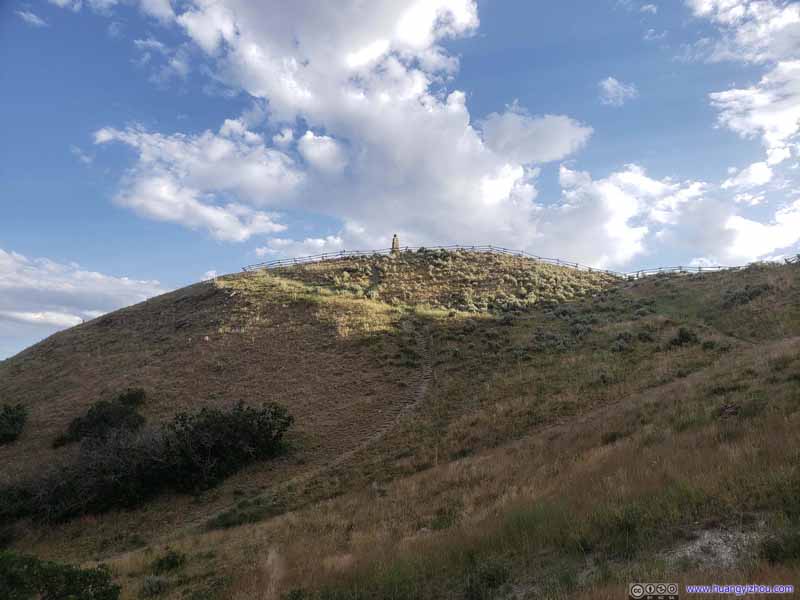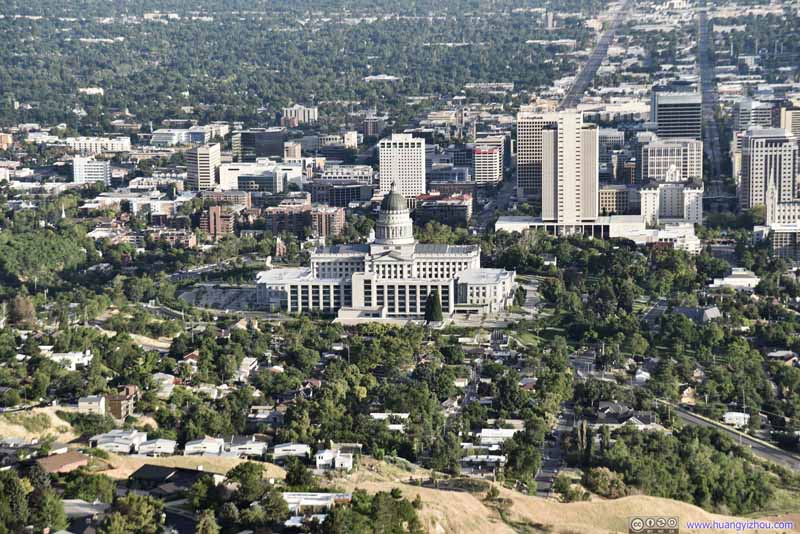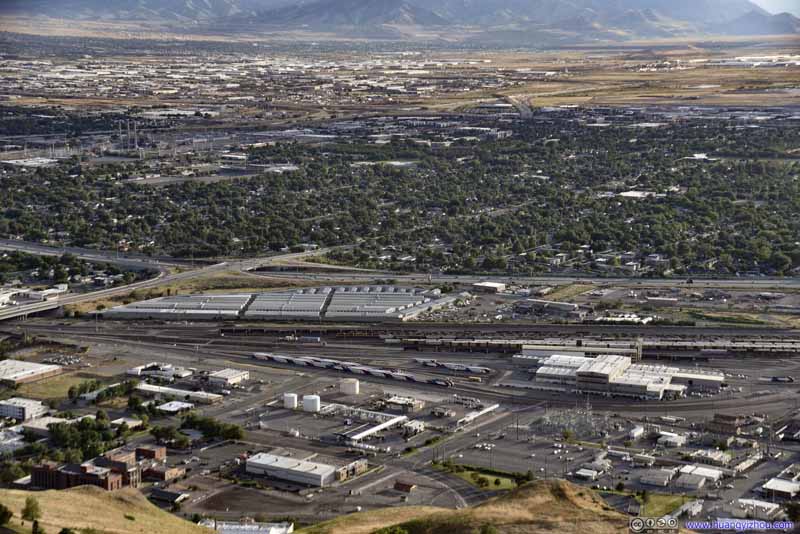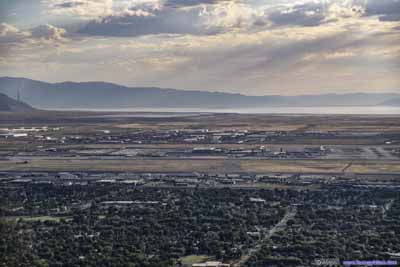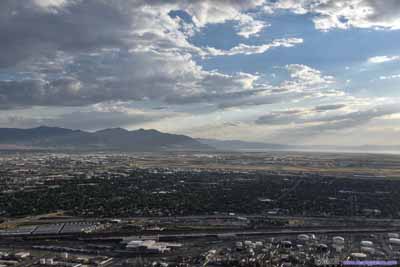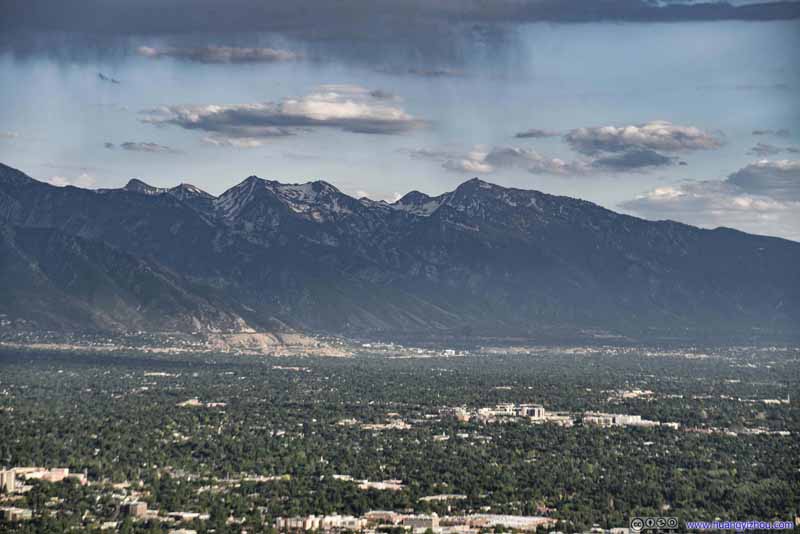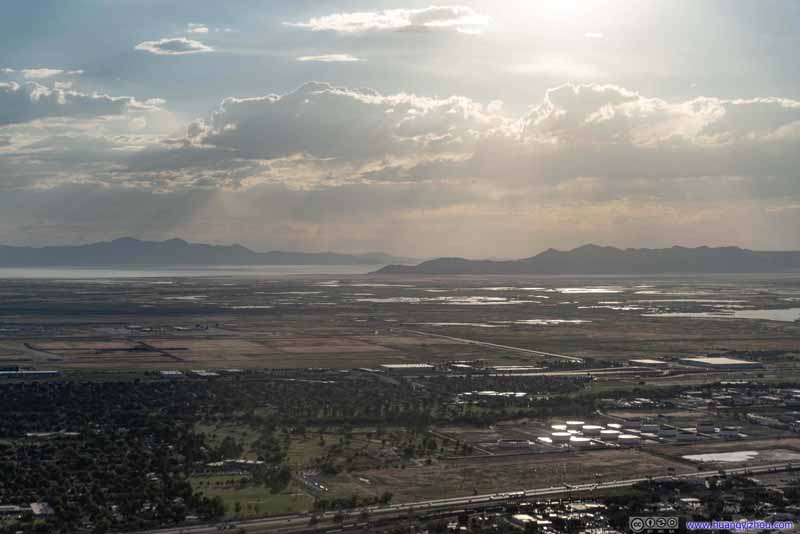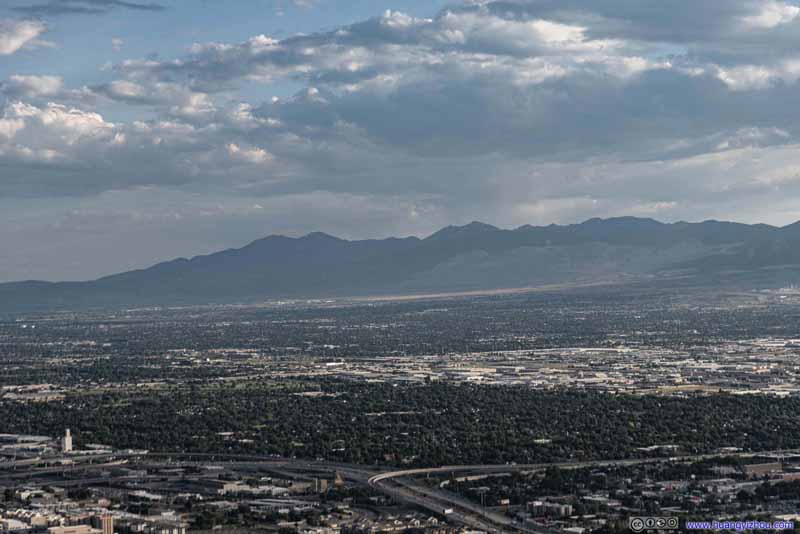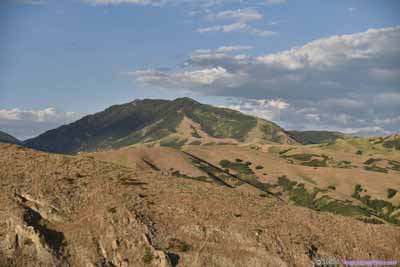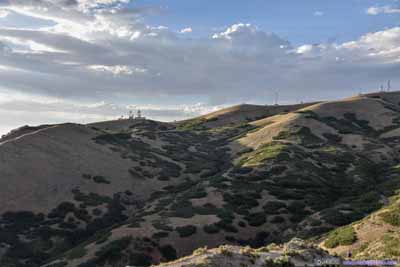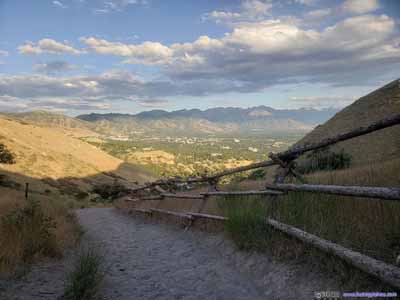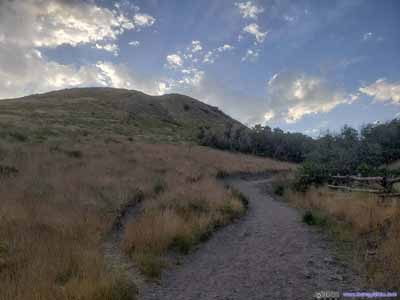Updated on September 18, 2020
Day 3 of 2019 Western US Tour, July 14, Salt Lake City
Sunday July 14, 2019. After landing in Salt Lake City last night, we planned to use the day as a buffer before our road trip to Yellowstone / Glacier National Parks, visiting a few attractions of Salt Lake City while gearing up for two weeks on the road.
After our delayed flight into Salt Lake City it was past midnight by the time we checked into a downtown hotel. Unfortunately, it was Saturday night and few restaurants were still open and finding food was harder than we expected. So by the time we headed to bed it was already 2am.
Which was a challenge as we planned to attend Mormon Tabernacle Choir’s Music and Spoken Word the next morning, which started each Sunday at 9:30am.
Music and Spoken Word by Mormon Tabernacle Choir
But since I have known the choir’s program for long and it’s why I planned this buffer day on a Sunday, I couldn’t afford to miss it. Thus while its website says gate opens at 8:30am, we managed to arrive at 8:50am, expecting a 40-minute nap wait. Instead, the choir was on stage in full costume rehearsing the day’s program.
Later even more surprise as we found out, as United States’ longest-running national radio program carried continuously on a network, Music and Spoken Word was first transmitted on July 15, 1929. So July 14, 2019 would mark its 90th anniversary of ongoing excellence. Totally unexpected, I was pleased to be part of that history-making moment.
As for the performance itself, official video recordings were available online, but not photography was permitted by audience, so I will skip this part.
Temple Square
After the performance, groups of volunteers would be leading tours of Temple Square, and we joined one of those.
Music and Spoken Word was first broadcast from this Tabernacle Building 90 years ago, and every week until the construction of the larger nearby conference center, which now houses the performance during the summer. The Tabernacle was built between 1864 and 1867 with curvatures roof that’s designed to reflect and amplify sound. Our guide told us the roof’s too good at sound reflection, that they had to build balconies on the second floor to dampen sound so that whispers from audiences wouldn’t be too audible.
And to demonstrate that, our guide went on stage and dropped a few pins onto the table. With the entire audience quiet and attentive, the distinct crisp sound resonated throughout the building.
And our guide pointed us to the pews that we were sitting on, which used to be lower and closer reflecting first pioneers’ average body build from malnutrition. Later they piled more wood onto the legs and made the seats higher.
Just south of Tabernacle was the Assembly Hall, the second permanent structure completed on Temple Square.
Then in the center of Temple Square was Salt Lake Temple, which was reserved for important church officials and closed to the public. There was a museum by its side with exhibits from the first pioneers to interior model of Salt Lake Temple.

Brigham Young Monument
Click for detail
First displayed at the Chicago World’s Fair in 1893 with bronze figure of an Indian facing east, a bearded fur trapper facing west, both of which preceded the Mormon settlers. On the south side is a bronze bas-relief of a pioneer man, woman, and child, while another bronze plaque has a list of the pioneers who arrived in the Salt Lake Valley on July 24, 1847, and their equipment.
Source: Federal Writers’ Project (1954). Utah: a guide to the state. US History Publishers
This main street of downtown Salt Lake City seemed eerily quiet for a Sunday morning. Later we walked along it back to hotel and I recalled seeing more homeless people than actual city dwellers with most of the shops closed. It’s hard to think that Mormon Church had nothing to do with this and it if did, it would be a sad breach of separation of church and state.
Then we passed along two historic houses.
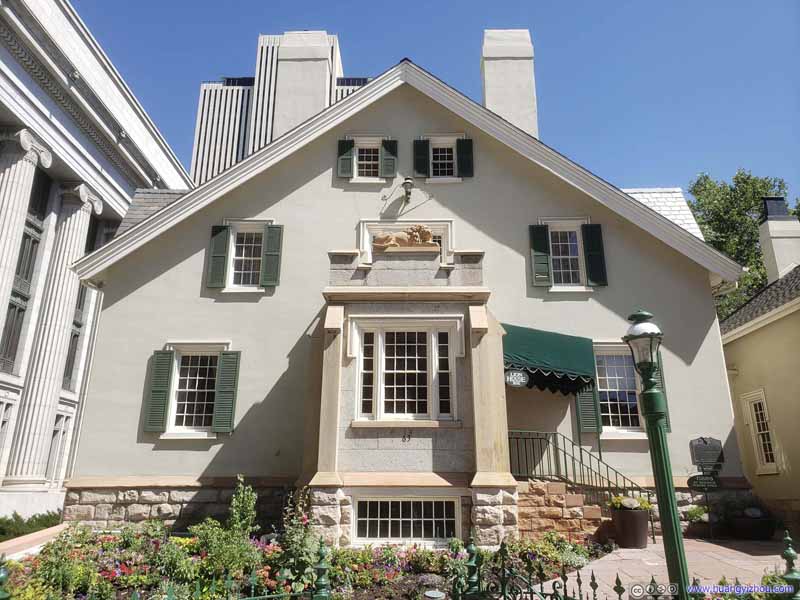
The Lion HouseHouse for Brigham Young’s wives. Hard to tell from outside that 20 wives could be housed under this tiny roof.
Click for detail about Lion House
The Lion House takes its name from the carved lion on top of the portico. The house was constructed with adobe blocks, a common building material during Utah’s settlement period.
Brigham Young, second president of the Church of Jesus Christ of Latter-day Saints, built the Lion House for some of his wives and children. Based on the Old Testament principle of polygamy, early leaders of the Church of Jesus Christ of Latter-day Saints encouraged church members to marry plural wives. This practice was officially ended in 1890.
The basement of the Lion House contained a dining room which could accommodate 70 people. On the main floor were sitting rooms and bedrooms for wives with children. The second floor contained 20 bedrooms for children and childless wives—one under each of the 20 steeply-pitched gables.
Brigham Young died in the Lion House in 1877. Some of his wives and children continued to live in the house until the 1890s. Today the building contains as a reception center and restaurant.
Click for detail about Beehive House
Completed one year prior to the Lion House, the Beehive House served as Brigham Young’s residence, offices, and reception area for official visitors. At this time, Young was both president of the Church of Jesus Christ of Latter-day Saints and Utah’s territorial governor.
The Beehive House was designed by Young’s brother-in-law, Truman Angell. Angell was also the architect for the Lion House and the Salt Lake Temple. The Greek Revival, stuccoed adobe Beehive House features a two-story veranda, an observatory, and a cupola topped with a beehive. Young’s son added a three-story wing to the north after he purchased the house in 1888.
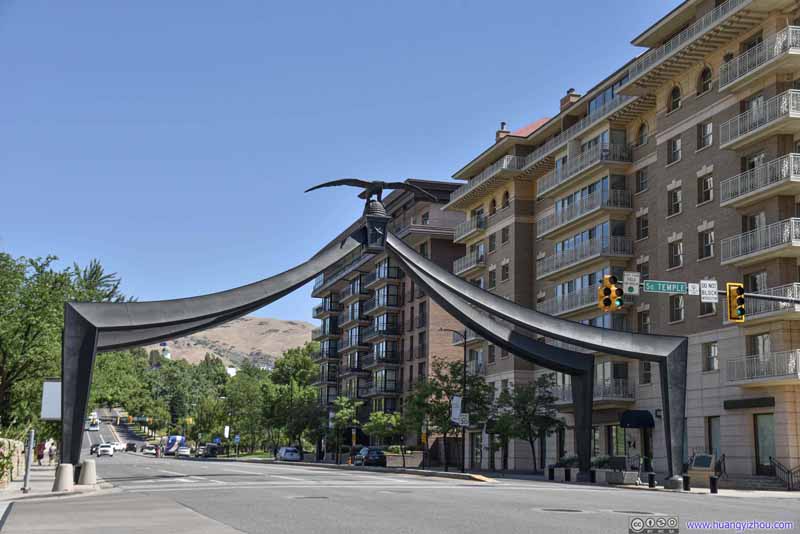
Eagle GateFirst erected in 1859 and commemorates the entrance to Brigham Young’s property. Current one erected in 1960s.
Click for detail about Alta Club
The exclusive club was founded in 1883 by prominent Utah businessmen. The original members were largely involved in the mining industry and all non-Mormons. The Alta Club’s official exclusion of Mormons reflects the deep divisions between Mormons and non-Mormons in late 19th-century Utah. After the turn of the century, the club gradually began to admit Mormons and helped promote accommodation between the two communities. The Alta Club now also welcomes women as members.
Since neither of these houses were open on Sunday, this concluded our tour of Temple Square. Our plan next was to walk back to hotel, pick up a rental car for the next two weeks, pick up some camping gear from some local store and store up food for the road trip tomorrow.
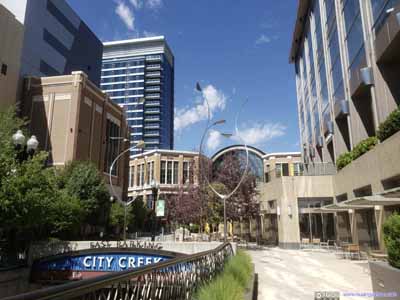
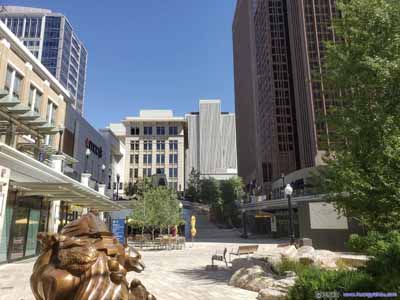 Downtown Shopping MallOriginally we planned to have brunch here. While Google Maps said every restaurant here would be open, in fact the entire food court together with every store was closed.
Downtown Shopping MallOriginally we planned to have brunch here. While Google Maps said every restaurant here would be open, in fact the entire food court together with every store was closed.
So after lunch, we took a rather long nap to compensate last night’s lack of sleep (also hide from the scorching mid-day sun). For the rest of the day, we decided to visit grounds of Utah State Capitol and Ensign Peak.
Utah State Capitol Building
After Utah obtained statehood in 1896, the State used Salt Lake City and County Building as its capitol building, which looked splendid from outside. That’s probably why they were never in a rush to build a proper State House, which wasn’t finished until 1916.
Since it’s Sunday, the only people at the State Capitol were tourists like us (so it’s free parking!). A few clouds were passing by, bringing a beautiful canopy to the photos.
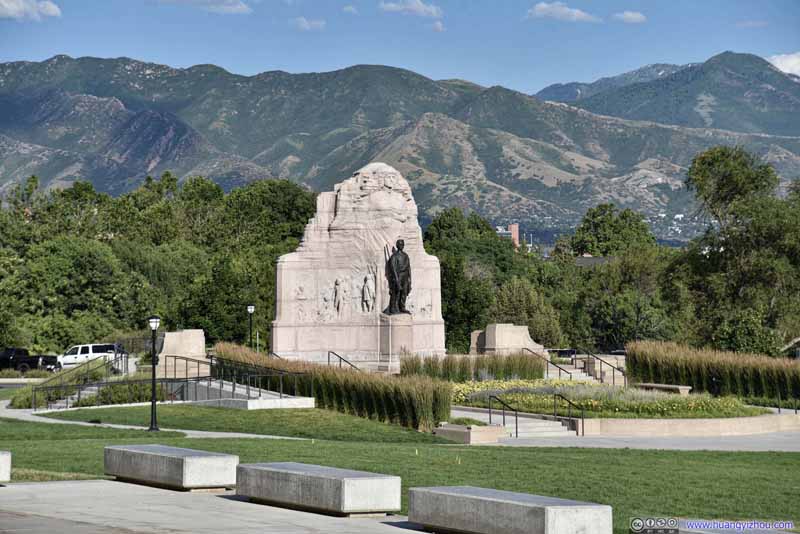
Mormon Battalion MonumentThe only religion-based unit in United States military history serving from July 1846 – July 1847 during the Mexican–American War of 1846–1848.
Click for detail about Mormon Battalion
History
In May and June 1846, the services of the Mormon people–en route to the west–were officially tendered to the United States government, then at war with Mexico.
President James K. Polk authorized Colonel Stephen W. Kearney, Commander of the Army of the West, to enlist five hundred Mormon volunteers and march to California. Captain James Allen, who was detailed to make the enlistment, arrived at the Mormon camps June 26.
After three weeks recruiting with the aid of Brigham Young and other officials of the Mormon Church, the Battalion was mustered into the United States Service at Council Bluffs, Iowa, July 16.
The march was via Ft. Leavenworth, Kansas; thence to Santa Fe, New Mexico, where the Battalion arrived in two divisions in October. Here Lieutenant-Colonel P. St. George Cooke was given command.
The Battalion left Santa Fe October 19 and marched southward down the Rio del Norte to 32º41′ North latitude; thence south and westward to near the headwaters of the San Pedro; north and westward to Tucson; and so to the Pacific. The march of over two thousand miles ended at San Diego, January 29, 1947.
The Battalion served in garrison duty in San Diego, San Luis Rey and Los Angeles, and in outpost duty at Cajon Pass until the term of enlistment ended July 16, 1947.
Eighty-one members of the Battalion re-enlisted for six months additional service and were known as “The Mormon Volunteers”Achievements
“Headquarters Mormon Battalion Mission of San Diego January 30, 1947”
“Order No. 1”
“History may be searched in vain for an equal march of infantry•••through a wilderness, where nothing but savages and wild beasts are found, or deserts where, for want of water, there is no living creature.•••We have dug deep wells, which the future traveler will enjoy.•••Ventured into trackless tablelands where water was not found for several marches.•••Worked our way over mountains and hewed a pass through a chasm of living rock•••to bring these first wagons to the Pacific•••The garrison•••of Tucson, gave us no pause, we drove them out with their artillery, but our intercourse with the citizens was unmarked by a single act of injustice, thus, marching half naked and half fed, and living upon wild animals, we have discovered and made a road of great value to our country.•••
By order Lieut-Colonel P. St. George Cooke, P. C. Merrill, Adjutant”
Seven members of the Battalion participated in the discovery of gold in California, January 24, 1948
Detachments of the Battalion that had been invalided to Pueblo on the Arkansas—numbering one hundred fifty men—joined Brigham Young’s original pioneer company, and participated in founding the Commonwealth of Utah.
By their justice to the conquered, by their courage and endurance, and by their patriotic devotion, the members of the Mormon Battalion brought lasting honor to their people, to the state of Utah and to their nation.
The dedication plaque is inscribed:
This monument was erected by authorization of the state of Utah as the result of a movement begun in 1905 by the “Daughters of the Mormon Battalion”. The funds came from thousands of contributors, the total of which was duplicated by an appropriation by the legislature of Utah. The monument was completed, unveiled and dedicated May 30, 1927.
Source: plaque underneath.
City Creek Park
Next, we took a brief tour of City Creek, which was in a valley just next to the State Capitol building, and was a favorite picnic location for the locals. We rested there for some time in the fragrance of flowers before driving up to Ensign Peak.
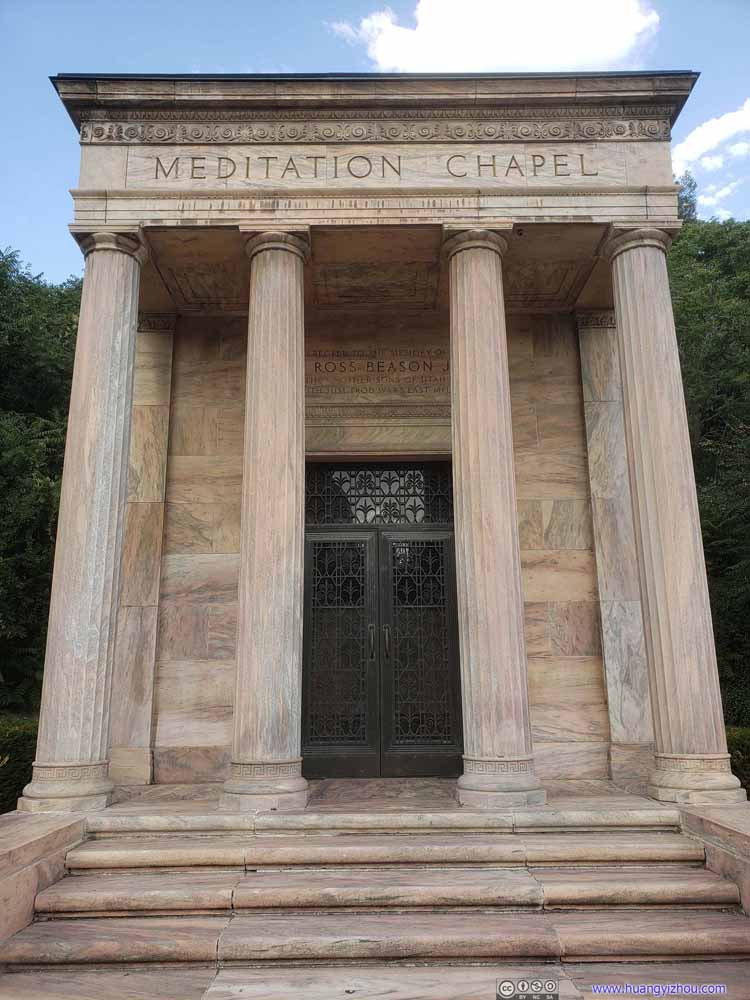
Meditation ChapelMr. and Mrs. Ross Beason built the chapel in 1948 as a memorial to their son, Ross Beason, Jr., and all other Utahns who died in World War II.
Ensign Peak
Not far from State Capitol (by driving standard) is Ensign Peak, one of the many mountain peaks surrounding Salt Lake City offering great hiking trails and views. The trailhead was in an upscale residential neighborhood. Despite lack of dedicated parking spaces, street parking was ample. And the trail seemed rather popular with locals.(It would amount to a decent and moderate daily workout.)
July 26, 1847, two days after the Mormon Pioneers entered this valley Brigham Young and party climbed to this point and with the aid of field glasses made a careful survey of the mountains, canyons and streams. In the group were Heber C. Kimball, Wilford Woodruff, George A. Smith, Ezra T. Benson, Willard Richards, Albert Carrington and William Clayton. Wilford Woodruff, first to ascend the Peak, suggested it as a fitting place to “set up an ensign” (Isaiah 11:12). It was then named Ensign Peak, subsequently the stars and stripes were raised here.Source: plaque at Ensign Peak.
And here’s GPS tracking of the trails.
Not too far from the trailhead there’s a small viewing platform with good enough views of Salt Lake City (trailhead is already on a hill). Technically, from trailhead to that platform it’s wheelchair accessible (which is very un-Republican).
After that, I headed uphill to the actual Ensign Peak, among beautiful grassland bushes and rolling hills, in typical magnificence of mountain time regions. The entire hike wasn’t very long, but the reward of views of Great Salt Lake was great.
After enjoying enough of the great views on Ensign Peak, I headed back to the parking lot. Even after taking lots of rests and photos on the way, I was back in the parking lot in less than an hour. After that, we headed back to hotel and called it a day.
END
Reference: preservationutah.org/images/stories/docs/tours/ndh.tour.pdf
![]() Day 3 of 2019 Western US Tour, July 14, Salt Lake City by Huang's Site is licensed under a Creative Commons Attribution-NonCommercial-ShareAlike 4.0 International License.
Day 3 of 2019 Western US Tour, July 14, Salt Lake City by Huang's Site is licensed under a Creative Commons Attribution-NonCommercial-ShareAlike 4.0 International License.

